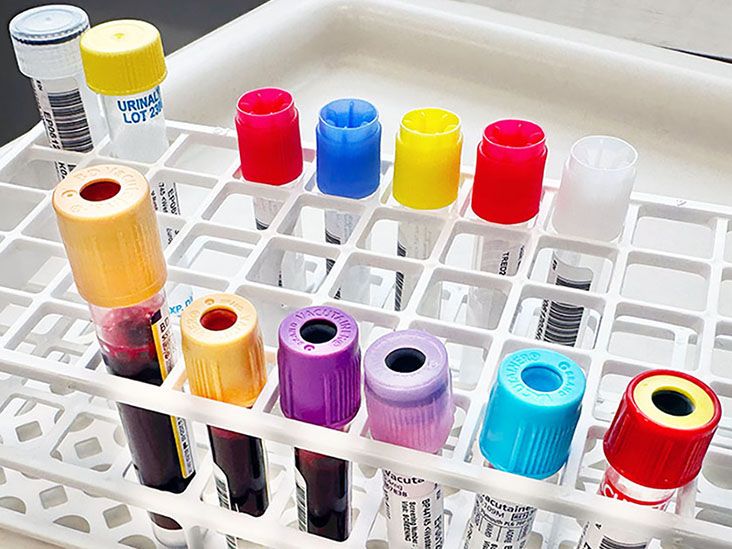Psoriatic arthritis and celiac disease, or gluten intolerance, are both autoimmune diseases. Research suggests that people with psoriatic arthritis are more likely to have celiac disease and may benefit from a gluten-free diet.
Psoriatic arthritis (PsA) occurs in people with psoriasis and causes painful inflammation of the joints. In people with celiac disease (CD), eating foods that contain gluten can trigger a range of digestive symptoms, including diarrhea, bloating, and abdominal pain.
In this article, we examine the link between gluten, CD, and PsA. We also look at PsA and CD in more detail and explain how to adopt a gluten-free diet.

Studies have found a
A 2011 Swedish study of people with CD found that 42 percent of psoriasis symptoms may be the result of the underlying CD. The researchers also found that children with CD had a higher risk of developing psoriasis.
According to a
The review also reported on other studies, which found that psoriasis symptoms were more severe in people with higher levels of CD antibodies in their blood.
The review authors concluded that a gluten-free diet might benefit some people with psoriasis, but they acknowledged the need for further studies.
While research indicates that there is likely to be a link between celiac disease and psoriatic conditions, the details of this relationship remain unclear.
Psoriasis is a long-term skin condition that causes red, scaly patches of skin. These patches often appear on the elbows, knees, scalp, and lower back, but they can occur almost anywhere on the body.
Doctors do not fully understand the cause of psoriasis, but they believe that it is an autoimmune disease. In people with autoimmune diseases, the immune system becomes overactive and mistakenly attacks the body’s cells instead of targeting infections and diseases.
Psoriasis that affects the joints is known as PsA.
The symptoms of PsA can include:
- swollen, painful joints
- changes to the nails on the fingers and toes
- neck pain
- pain in the lower back and hips
- back pain
CD is an autoimmune disease that affects the gastrointestinal (GI) tract. It occurs in around 1 percent of people in Western countries. People with CD are unable to tolerate gluten, which is a type of protein in cereal grains, such as wheat, barley, and rye.
In people with CD, eating foods that contain gluten can cause a range of symptoms, including:
- chronic diarrhea
- constipation
- vomiting
- abdominal pain
- bloating and gas
- indigestion
Untreated CD can also lead to anemia, unintentional weight loss, and other health issues. If children with CD do not get treatment, this condition can lead to growth problems.
Currently, the
Anyone who experiences symptoms of CD should see a doctor. Following an evaluation, the doctor may recommend following a gluten-free diet. Some studies suggest that people who have psoriasis and CD may find a gluten-free diet beneficial for relieving symptoms of both conditions.
Gluten is naturally present in cereal grains, such as wheat, barley, rye, and spelt. These cereals are present in many food products, including:
- bread
- pasta
- breakfast cereals
- many processed foods
- baked products, such as cakes, cookies, and pastries
- beer
Being on a gluten-free diet means avoiding foods that contain gluten, or those that may have come into contact with this type of protein.
The Celiac Disease Foundation recommend choosing foods that are naturally gluten-free, such as:
- fruits and vegetables
- beans and legumes
- nuts
- most milk and dairy products
- meat and poultry
- fish and seafood
Some grains and starchy foods are also gluten-free, including:
- rice
- corn
- potato
- cassava
- buckwheat
- flax
- gluten-free oats
- chia
- quinoa
- millet
- soy
- tapioca
- beans
When selecting gluten-free foods, it is essential to read the packaging and labels carefully and to check that the product has come from a gluten-free environment.
People following a gluten-free diet should take particular care with certain foods, including:
- Oats. These often come from factories that also process wheat. Always check the packaging for a gluten-free label.
- Breakfast cereals. Not all cereals contain gluten, but any that are gluten-free should have a label to confirm this.
- Soups and sauces. Many manufacturers use wheat as a thickening agent.
- Processed fruit. Many companies process dried fruit or other fruit products in factories that also handle gluten.
- Beverages. Juices, sodas, hard alcohol, wine, and cider are all generally gluten-free. However, beer and other non-distilled malt beverages often contain gluten.
- Dietary supplements and medicines. Some vitamins and medicines may contain gluten. It is vital to always talk to a doctor before changing medication or taking any supplements.
PsA and CD are both types of autoimmune disease. In people with autoimmune diseases, the immune system becomes overactive and mistakenly attacks the body’s tissues.
PsA is a type of arthritis that occurs in people with psoriasis and causes joints to become painful and swollen. In people with CD, eating foods containing gluten can trigger diarrhea, abdominal pain, and other digestive symptoms.
Research suggests that people with PsA are more likely to have CD. For people who have both PsA and CD, following a gluten-free diet may relieve symptoms of both conditions.


